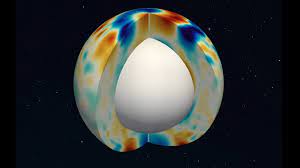For centuries, humanity has marveled at the majestic spectacle of the sun, our closest star, whose radiance sustains life on Earth and fuels the dynamics of our solar system. Yet, beneath its luminous facade lies a realm of intricate processes and enigmatic phenomena, including the phenomenon of differential rotation—a puzzling pattern wherein different regions of the sun rotate at varying speeds. This perplexing phenomenon has long captivated the minds of scientists, prompting rigorous investigation to unravel its underlying mechanisms. In a groundbreaking study led by researchers from the Max Planck Institute for Solar System Research (MPS), new insights into the sun’s differential rotation have emerged, shedding light on the role of long-period oscillations in shaping the dynamics of our solar companion.
The Enigma of Differential Rotation: The sun’s differential rotation, characterized by variations in rotational speed across different latitudes, has intrigued astronomers for decades. While the poles exhibit a leisurely rotation with a period of approximately 34 days, the equatorial region whirls around at a brisk pace, completing a full rotation in just 24 days. This peculiar disparity in rotational speeds poses a fundamental question: What mechanisms govern the sun’s intricate dance of rotation? Traditional models have proposed the existence of a subtle temperature gradient between the poles and the equator as a potential driver of this phenomenon, yet direct measurements have remained elusive due to the formidable challenges of observing the sun’s deep interior.
Harnessing the Power of Helioseismology: Enter helioseismology—the revolutionary field of probing the sun’s interior using solar acoustic waves. Armed with cutting-edge observational techniques and sophisticated numerical simulations, scientists have embarked on a quest to decode the sun’s internal dynamics and unlock the secrets of its enigmatic rotation patterns. Leveraging data from NASA’s Solar Dynamics Observatory and innovative computational models, researchers at MPS have embarked on a pioneering journey to unravel the mysteries of the sun’s differential rotation.
The Role of Long-Period Oscillations: At the heart of this quest lies the discovery of long-period oscillations—subtle yet profound ripples in the sun’s surface dynamics that hold the key to understanding its rotational behavior. Through meticulous analysis of observational data and sophisticated numerical simulations, the researchers have uncovered a pivotal link between these oscillations and the regulation of the sun’s rotational dynamics. These high-latitude oscillations, with velocities reaching up to 70 kilometers per hour, play a pivotal role in transporting heat from the poles to the equator, thereby mitigating temperature differentials and exerting a profound influence on the sun’s angular momentum balance.
Unlocking the Mysteries of Solar Dynamics: The findings of this study represent a paradigm shift in our understanding of the sun’s differential rotation, offering unprecedented insights into the intricate interplay between temperature gradients, fluid dynamics, and global solar dynamics. By elucidating the underlying mechanisms driving long-period oscillations, researchers have unveiled a crucial feedback mechanism that regulates the sun’s rotational patterns and shapes its dynamic behavior. Moreover, this study highlights the pivotal role of helioseismology in probing the sun’s deep interior and unraveling its mysteries.
Future Directions and Implications: As we peer deeper into the heart of our solar companion, new horizons of discovery beckon, offering tantalizing opportunities to further unravel the mysteries of solar dynamics. Future research endeavors will be aimed at elucidating the diagnostic potential of long-period oscillations and unraveling their role in shaping the broader context of solar activity and space weather phenomena. From advancing our understanding of stellar evolution to informing efforts to predict solar variability and its impact on Earth, the insights gleaned from this study pave the way for a deeper appreciation of the sun’s pivotal role in shaping the cosmic tapestry of our universe.
